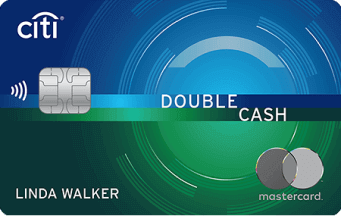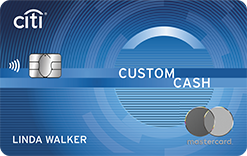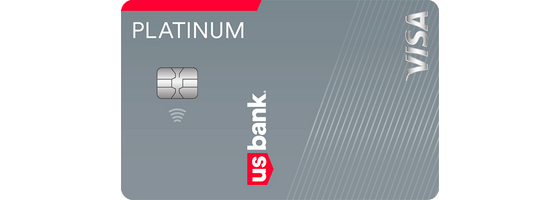Our evaluations and opinions are not influenced by our advertising relationships, but we may earn a commission from our partners’ links. This content is created independently from TIME’s editorial staff. Learn more about it.
We’ve all made mistakes. The financial ones, such as crippling credit card debt, are some of the hardest to undo. One powerful tool for shaking off high-interest debt is a balance transfer credit card.
You can save yourself quite literally thousands of dollars if you’re in a situation where you’re only able to make the minimum payment on a credit card with 20% APR or higher—simply by transferring that balance to a credit card that offers 0% intro APR.
Some of the best credit cards offer 0% intro APR for up to 21 months. You’ll still be responsible for making the minimum payment each month, but you won’t accrue any interest for a year or more, depending on the card you open. Below are the best balance transfer credit cards for nearly any situation.
Chase Freedom Unlimited®
Why we like it
The card_name is a solid flat-rate earnings card with annual_fee_disclaimer annual fee. Although the 1.5% cash back doesn’t seem impressive at first glance, it becomes more valuable when combined with other rewards cards from Chase that can be redeemed for a far greater value.
This card is recommended for everyday use, whether for doctor copays or big box store purchases. It can be a large earner for cardmembers who want to get the most out of their everyday spending.
Best balance transfer credit cards: Summary
- Best for the longest intro period: card_name
- Best for late fees: card_name
- Best for beginners: card_name
- Best for good credit: Citi Double Cash® Card
- Best for flexible rewards: card_name
- Best for cash back rewards: card_name
- Best for choosing your own rewards: Citi Custom Cash® Card
- Best for 0% intro APR on purchases: U.S. Bank Visa Platinum® Card
Our recommendations for the best balance transfer credit card
Best for the longest intro period: card_name
The card_name doesn’t have a whole lot going for it. The card doesn’t earn rewards or have valuable ongoing benefits. All you’ll really find is free access to your FICO score (something many cards offer these days) and some entertainment perks, such as early access to sports and music ticket sales.
But for those looking for an absolute monster of a balance_transfer_intro_apr,balance_transfer_intro_duration, card_name delivers. In fact, there’s no card on the market more generous in this capacity. There is no interest on balance transfers for 21 months. You’ll have to complete your transfers within four months of opening your account.
It’s also worth noting that you’ll receive intro_apr_rate,intro_apr_duration. After this window closes, you’ll be subject to reg_apr,reg_apr_type APR.
Best for late fees: card_name
The card_name is strikingly similar to its sibling, the card_name. It doesn’t earn rewards and its ongoing benefits are paltry. But the intro APR offer is exactly the same: balance_transfer_intro_apr,balance_transfer_intro_duration (and intro_apr_rate,intro_apr_duration). Transfers must be completed within four months of account opening.
After the intro APR window, the card incurs a reg_apr,reg_apr_type APR—slightly higher than the card_name. But the card_name has one big advantage: You’ll never pay a late fee or be subject to any penalty APR for a late or returned payment. Just note that you’ll pay a separate fee for returned payments.
Best for beginners: card_name
The card_name is an excellent balance transfer credit card for beginners for a few reasons.
You’ll get a solid 0% intro APR on both purchases and balance transfers for the first 18 months, after which you’ll be subject to a reg_apr,reg_apr_type APR. But each cardmember year you spend $1,000 on purchases, Chase will automatically consider your card for a 2% APR decrease.
Chase will also consider you for an increased credit limit if you make all your payments on time and spend at least $500 during the first six months of card membership.
Finally, you’ll get unusually solid benefits for such a low-level card. For example, you’ll receive secondary rental car insurance, purchase protection, three months of free DoorDash DashPass membership (activate by December 31, 2024), and three months of Instacart+ membership (activate by July 31, 2024).
Best for good credit: Citi Double Cash® Card

Citi Double Cash® Card
Citi Double Cash® Card
The Citi Double Cash® Card is one of the trustiest and uncomplicated cash back credit cards in existence. It also happens to have above average intro APR terms: balance_transfer_intro_apr,balance_transfer_intro_duration, followed by reg_apr,reg_apr_type. As a comparison, most rewards credit cards offer 15 months or less.
The Citi Double Cash® Card effectively earns 2% on all purchases: 1% back when you make a purchase and 1% back when you pay off that purchase. The rewards you earn are technically Citi ThankYou points which you can redeem for cash at a rate of 1 cent each.
To most cardholders, that’s an inconsequential tidbit. But if you’ve also got the Citi Double Cash® Card or the Citi Prestige (not available to new applicants), you can transfer the rewards you earn with the Citi Double Cash® Card to more than 15 airline and hotel loyalty programs for free travel. It’s not difficult to get a value significantly above 1 cent each.
Best for flexible rewards: card_name
Chase Freedom Unlimited®
Why we like it
The card_name is a solid flat-rate earnings card with annual_fee_disclaimer annual fee. Although the 1.5% cash back doesn’t seem impressive at first glance, it becomes more valuable when combined with other rewards cards from Chase that can be redeemed for a far greater value.
This card is recommended for everyday use, whether for doctor copays or big box store purchases. It can be a large earner for cardmembers who want to get the most out of their everyday spending.
The card_name comes with a welcome bonus of 1.5% in bonus cash back (added to the card’s regular earning rate) on all eligible purchases up to $20,000 spent during the first year of card membership. That’s equivalent to a $300 bonus—though you’ll have to do some big spending to receive all of it.
The card also offers 0% intro APR for both purchases and balance transfers during the first 15 months. You’ll then pay a reg_apr,reg_apr_type, based on creditworthiness.
This card has an exceptional return rate for a no annual fee credit card:
- 5% back on travel booked through the Chase Travel Portal.
- 3% back on dining, takeout, and eligible delivery services.
- 3% back at drugstores.
- 1.5% back on all other eligible purchases.
Remember, the intro offer increases the above earning rates by 1.5%.
While the card is marketed as cash back, it actually earns Chase Ultimate Rewards® points—the most flexible points you can collect.
If the card_name is the only Chase card you hold, your best redemption options are either cash back (at a rate of 1 cent per point) or gift cards (which sometimes provide a value as high as 1.1 cent per point). But if you’ve also got an annual fee-incurring Chase Ultimate Rewards card (such as the card_name), you unlock the ability to transfer points to valuable airline and hotel partners. You can even book travel through the Chase Travel Portal for up to 1.5 cents per point, depending on which card you have.
Best for cash back rewards: card_name
Blue Cash Everyday® Card from American Express
The card_name offers intro_apr_rate,intro_apr_duration, intro_apr_duration and balance_transfer_intro_apr,balance_transfer_intro_duration after you open your account (followed by reg_apr,reg_apr_type - See Rates & Fees). It also comes with a $200 statement credit after spending $2,000 on purchases within the first six months of account opening.
This card puts cash back in your pocket in more ways than one. First, its earning rates are both strong and practical. You’ll earn 3% back at U.S. supermarkets, U.S. gas stations, and with U.S. online retailers. Each of these categories will earn bonus cash back for up to $6,000 in spending—then 1%. You’ll also earn 1% back on all other purchases.
Second, the card comes with a couple of statement credits:
- Monthly $7 statement credit to offset the cost of the Disney Bundle costing at least $12.99 per month (the Disney Bundles includes Hulu, Disney+, and ESPN+). That’s a potential $84 back each year.
- Monthly $15 statement credit toward Home Chef meal kits (essentially a box of ingredients shipped to your door). That’s a potential savings of up to $180 per year.
Enrollment is required for both of these credits. If you use one or both of these services anyway, the credits are as good as cash. Either way, they are rare benefits for a no annual fee credit card.
Best for choosing your own rewards: Citi Custom Cash® Card

Citi Custom Cash® Card
Citi Custom Cash® Card
The Citi Custom Cash® Card provides 0% for 15 months (then reg_apr,reg_apr_type) on purchases and balance_transfer_intro_apr,balance_transfer_intro_duration on balance transfers. It also comes with $200 cash back after spending $1,500 on purchases within the first six months from opening your account. This bonus offer will be fulfilled as 20,000 ThankYou® Points, which can be redeemed for $200 cash back.
This card will automatically identify your most used eligible spending category and reward you with 5% back for your spending (on up to $500 in spend per billing cycle then 1% thereafter). Eligible categories include:
- Drugstores
- Fitness clubs
- Home improvement stores
- Live entertainment
- Gas stations
- Grocery stores
- Restaurants
- Select streaming services
- Select transit
- Select travel
All other eligible purchases earn 1% back.
Similar to the Citi Custom Cash® Card, the cash back you earn is fulfilled as Citi ThankYou points. If you hold a Citi Premier® Card, you can convert the rewards you earn into lots of different airline and hotel currencies.
Special Travel Offer: Earn an additional 4% cash back on hotels, car rentals, and attractions booked on Citi Travel℠ portal through 6/30/2025.
Best for 0% intro APR on purchases: card_name

U.S. Bank Visa Platinum® Card
U.S. Bank Visa Platinum® Card
The card_name provides 0% APR on purchases for 18 billing cycles and 0% intro APR on balance transfers for 18 billing cycles, followed by a 19.49% to 29.49% variable APR. It’s rare to find a card that offers such lengthy intro APR for both balance transfers and purchases.
This card doesn’t earn rewards for your spending and the majority of its benefits will likely make you yawn. But it’s got one ace up its sleeve: cellphone insurance. You’ll receive up to $600 in coverage per claim against damage or theft (max two claims per 12 months) with just a $25 deductible. All you have to do is pay your monthly cell phone bill with the card, and you’re automatically covered.
Best balance transfer credit cards comparison chart
| Card name | Annual fees | Credit score needed | Balance transfer intro apr | Regular APR |
|---|---|---|---|---|
annual_fees | credit_score_needed | balance_transfer_intro_apr,balance_transfer_intro_duration | reg_apr,reg_apr_type | |
annual_fees | credit_score_needed | balance_transfer_intro_apr,balance_transfer_intro_duration | reg_apr,reg_apr_type | |
annual_fees | credit_score_needed | balance_transfer_intro_apr,balance_transfer_intro_duration | reg_apr,reg_apr_type | |
credit_score_needed | balance_transfer_intro_apr,balance_transfer_intro_duration | reg_apr,reg_apr_type | ||
annual_fees | credit_score_needed | balance_transfer_intro_apr,balance_transfer_intro_duration | reg_apr,reg_apr_type | |
annual_fees | credit_score_needed | balance_transfer_intro_apr,balance_transfer_intro_duration | reg_apr,reg_apr_type | |
credit_score_needed | balance_transfer_intro_apr,balance_transfer_intro_duration | reg_apr,reg_apr_type | ||
$0 | Good | 0% intro APR on balance transfers for 18 billing cycles | 19.49% to 29.49% variable APR |
Our Methodology
We examined the best balance transfer credit cards for nearly every financial situation. Only the cards that excelled for their specific target audience made our list. We weighed each card’s benefits, ease of use, and 0% intro APR balance transfer window to find the absolute best option for you.
Who should apply for a balance transfer credit card?
If you’re under the thumb of crippling credit card interest, it can be a good idea to open a balance transfer credit card to give yourself a breather. Doing this will give you a window of up to 21 months of no interest payments (depending on the card you open), allowing you to throw as much money toward the principal amount as you possibly can.
Some credit cards accept balances other than credit cards, as well. If you have a personal loan or an auto loan with which you need a break from the interest payments, a balance transfer card could be your answer.
Just note that you can only transfer a balance equal to or less than your balance transfer card’s credit line. If you have fair credit, you may be approved for a credit line of just $500. That won’t do much good if you’ve got $5,000 in high-interest debt.
How to compare 0% balance transfer credit cards and select the best one for you
To find the best 0% intro APR balance transfer card for you, consider the following:
Do you prefer rewards over a longer intro APR window?
The credit cards with the most generous 0% intro APR terms generally do not earn rewards. Their main function is to alleviate your interest woes.
If you’re in the market for a balance transfer credit card, escaping high interest is probably top of mind for you. However, you should weigh the pros and cons of opening a rewards credit card with a slightly smaller 0% APR window. You may be able to pay off your debt faster than you think, thanks to the welcome bonus and rewards you could earn.
Which ongoing benefits are important to you?
Is 0% intro APR quite literally the only thing you care about? Some of the best balance transfer credit cards come with statement credits that may be able to reduce the amount of money you’re spending (think streaming services, restaurant purchases, cellphone insurance, etc.) and therefore help you to put more money toward your balance.
What are your financial goals after the 0% APR window closes?
Again, the cards that are best optimized for balance transfers tend to have nothing else exciting going on. Once these cards resume interest charges, they’ll deliver little more than an alternative to spending cash. If you’re not much into the world of credit cards, you might not care. If you’ve got future aspirations—travel, cash back, etc.—it’s wise to choose a card that can deliver more perks for the foreseeable future.
Tips on maximizing the value of your 0% balance transfer credit card
Read the fine print
Some credit cards have different 0% intro APR terms for balance transfers and new purchases. Don’t confuse the two. Ensure that you know exactly the deal you’re getting when you open a balance transfer credit card.
One of the most important details is the fee you’ll pay to transfer your balance. Fees can range from 3% to 5% of your total balance. It’s a tough pill to swallow initially, but it can save you exponentially more in the long run.
Transfer your highest APR debt first
Lowering interest is the primary function of balance transfer credit cards. The most effective use of a balance transfer is to move debt from whichever credit card has the most offensive APR first. Doing this will bring you the most immediate relief.
Commit to large payments
You opened a balance transfer card not just so you don’t have to worry about interest rates for a year or two; you opened it so you could more quickly eradicate your debt. Figure out how much money you can possibly spare to put toward that debt and stick to your commitment.
Don’t spend more than usual
Moving a balance from one card to another can give you a false sense of security if you’re not careful. Just because the credit card that once housed a large balance now has none doesn’t mean you should start spending on it again. Keep your disposable income going toward paying down your balances.
Alternatives to 0% balance transfer credit cards
If you’re feeling the sting of high interest rates, a balance transfer credit card isn’t your only option.
Personal loan
A personal loan can come in many forms. Whether you open a debt consolidation loan or a less specific loan, you can use that money to pay off your credit card(s). Then you’ll have just one (presumably more manageable) payment per month. What’s more, personal loans are almost always going to have a significantly lower interest rate than credit cards charge.
Low APR credit card for new purchases
This is in the same vein as a balance transfer credit card—just a different way to go about it.
If you don’t want to transfer your balance away from your high-interest card, you can simply open a credit card with more favorable interest rates, preferably one that offers 0% intro APR for new purchases, and begin solely using that card.
You can then make only the minimum payment on that card without worrying about paying interest—and put all your money toward paying down your high-interest credit card. You’ll save on balance transfer fees this way, but it likely won’t save you as much as instantly shedding the interest payments of a large balance via a balance transfer.
TIME Stamp: Balance transfer cards can offer more than 0% APR
Some balance transfer cards are best-in-class in other areas, such as cash back return rate, choose-your-own bonus categories, earning flexible rewards, and more.
Frequently asked questions (FAQs)
What debt can I transfer to a balance transfer credit card?
The type of debt you can transfer to a credit card depends on the card issuer. It’s possible to transfer home equity loans, student loans, auto loans, and more to a balance transfer credit card. Just note that it’s not always a good idea unless you can pay off your balance by the time your 0% intro APR window closes. That’s because credit cards tend to have much higher interest rates than other types of loans.
Also keep in mind that you can only transfer a balance no higher than the credit line you were approved for when opening a balance transfer credit card. Some banks require that you transfer notably less—and may even cap the amount you can transfer during a 30-day period.
How will transferring a balance impact my credit score?
Your credit score will not be affected by a balance transfer. In fact, opening a balance transfer credit card may improve credit score numbers.
Here’s why: When you apply for a credit card, your credit will take a temporary hit due to the hard credit inquiry performed by the card issuer. But your credit utilization (the ratio of available credit to total credit) will go down. Credit utilization is one of the biggest factors in calculatinga credit score.
How much is a balance transfer fee?
Balance transfer fees tend to be either $5 or a percentage of the total balance you’re transferring—whichever is higher. The percentage is usually between 3% and 5%.
How to do a 0% balance transfer
Transferring a balance is not difficult. Simply contact the bank that issues your new balance transfer credit card, either online or by phone, and a customer service rep can help you through it. You’ll have to give the issuer the account numbers of the loans that you’d like to transfer. Don’t be surprised if it takes a week for your balances to transfer.
You can transfer multiple balances to a credit card. You can also transfer a balance after your 0% intro APR window has closed, but you’ll be on the hook for the card’s regular APR if you carry a balance.
How to apply for a balance transfer credit card
Applying for a balance transfer credit card is the same as applying for any other credit card. You’ll need pertinent details such as your Social Security number and annual household income. You may also have the option to input the account information of the loans you’d like to transfer directly on the application page.
The information presented here is created independently from the TIME editorial staff. To learn more, see our About page.

